Unflattening
In one of my favourite moments in Nick Sousanis' Unflattening, he postulates (by way of citation) that we should consider argumentation as a dance. Rather than as a battle, with the requisite victors and losers, mounting casualties, and abiding sense of aggression, we should look at argument as an evolving cooperative effort. Two sides—two people—with their oppositional stances (in that they stand opposite each other) collaborating in a joined back-and-forth. Together, the participants artfully maneuver and through their conjunction arrive at new places, even if often remaining at distinction from each other. It's a beautiful picture and I don't think I'll ever wish to see argument as combat ever again. So: it is in my infatuation with the dancers' image that I approached Sousanis' own argument.
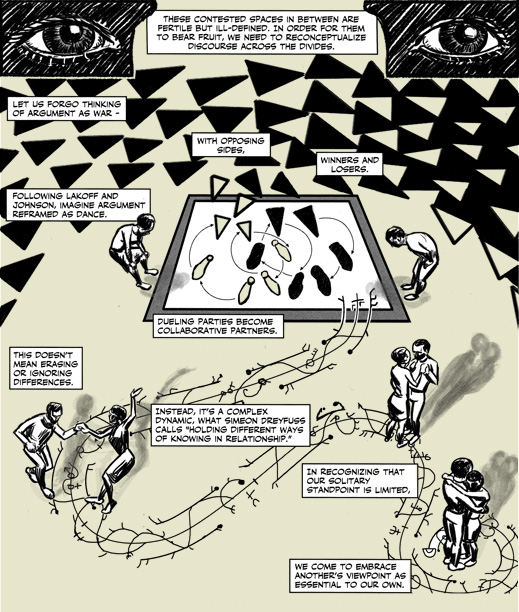
Unflattening is a thick work. If you don't count the pages and pages of end notes and bibliography, the book might seem a bit lean at a slim 152 pages. But the pages are large and they are full—not just packed with words and with images, but with ideas. This is, after all, Sousanis' dissertation,11Or maybe a revision of that dissertation. I'm unclear on that—not that it really matters. so some sort of thought project must lurk within. I needed enough time with his discussion that I read it once myself, then had my wife read it to me in the car so I could (blasphemy!) focus on the words without the pictures getting in the way.22More on this in a bit.
Honestly, I'm not perfectly sure how to approach Unflattening: as a critic or as a reviewer?33For those who've never encountered the distinction, the reviewer discusses the value of a work with the idea of the consumer in mind. The reviewer encounters a book or a movie or an album and discusses, from their own subjective vantage, whether the thing is any good or not. The goal of this (and why people actually read reviewers) is twofold: 1) to help readers know whether or not a work is something they'd be likely to happily spend their money or time engaging; and almost more importantly, 2) to help readers understand their own expenditure of money or time. Expanding on the second point briefly, if a person appreciated a work, they want to read reviews that confirm their own tastes. Likewise, if they hated a thing, they hope to read a reviewer excoriate that thing. There is little more satisfying than to read that someone you respect holds the same opinion as you on a work. And then, outside this main group are the undecided who are looking to have their own tastes clarified through the mediation of a second opinion.
So to review: reviewers speak to the consumerist aspect of whether a thing was good or not. The critic, on the other hand, may not be remotely concerned with whether a work was enjoyable or emotionally satisfying. The critic is most concerned with the work presented and how in sits in the stream of all works. The critic investigates the thing's influences and how it might influence. The critic is concerned with meaning, with how the technicalities of the craft work to express the book/movie/song's purpose. The critic isn't interested in telling you whether or not a thing is something you'll be happy to spend time or money on. Instead the critic wants to help you understand the thing under the presumption that you have already consumed it. The critic is therefore unconcerned with spoilers because they have in mind the idea that there is no reason someone would be able to engage actual criticism without having a working knowledge of the thing being criticized. On the one hand, the most interesting discussion of Sousanis' book and its ideas can only be written of from the critic's view. On the other hand, I suspect that few have yet picked up Unflattening, and so any discussion of its arguments would sit in a vacuum. Dead weight waiting for some moment when a future reader of the book accidentally trips across the critique and, really, how likely is that? So review it is. But how do I review a book that is essentially an extended argument for ways of seeing?
Reiterating from above, I honestly don't know.
Unflattening begins with an apocalyptic44Apocalyptic in both the common sense as well as in the literal sense. Common in that there is end-of-the-world seriousness to Sousanis' opening conclusion that the entire population essentially "exists as no more than shades, insubstantial and without agency." Literal in that he means it as an apocalypsis, an unveiling of what is, a pulling back of the curtain. claim that we are something of a doomed society of people labouring under the illusion of free thought. That is the problem Sousanis seeks to solve. He compares the combined human experience to that of the flatlanders of Edwin Abbott's Flatland (a book I haven't read in twenty years but for which I still hold a remnant appreciation), a people who only see and conceive in two dimensions, only able to experience depth through circumstantial evidence and who have no sense of height at all. Of course we in the three-dimensional world are able to perceive these things with ease but would scarcely be able to explain them to a flatlander without sounding either mad or unintelligible—or perhaps just resembling a wild fantasist (maybe a hokey sci-fi author). Sousanis, as Abbot before him, suggests that we are like flatlanders and require unflattening in order to understand the world in ways that would approach The Way Things Really Are.
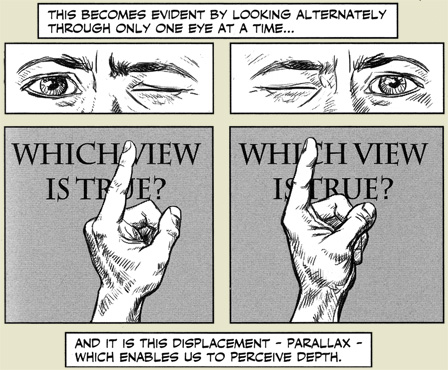
Sousanis' solution (by my reading) seems to require in many ways a kind of mundane deus ex machina. He doesn't ask for a divine injection of new ideas, but he does propose that in our ties and bonds to the rest of human society we find a constant injection of new points of sight by which we might escape the ruts of perspective we travel daily. (That's a deeply simplified version of 152 pages of more nuanced discussion.) And while I don't think Sousanis' proposal escapes the dire problem set forth in his introduction, there really is something beautiful and testable in it.
Willard Quine, from what I understand, suggested something similar. According to a holiday discussion I had with a friend fifteen years ago, Quine described a person's core body of knowledge as a web in which everything more or less connects.55The Quine in my imagination here may actually be overestimating the degree to which the average person's knowledge and beliefs actually form a coherent whole. New information is acquired and woven into the web in ways that fit with preexisting beliefs. Occasionally, new information is obtained that cannot fit with the web. These recalcitrant experiences act as stones thrown through the web, collapsing portions of it entirely. The web of belief and understanding then must be rewoven in a fresh way to account for the recalcitrant experience. (I actually describe in my Footnotes In Gaza review how Joe Sacco's earlier book, Palestine, was the recalcitrant experience that instigated my own reconception of the Israel/Palestine problem.) This possibly Quinian explanation of the acquisition of new perspective fits well with what I think Sousanis is seeking to do with Unflattening.
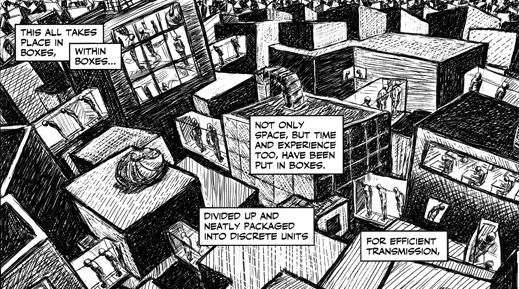
For the most part, Sousanis makes good use of the form and presents a lot of good ideas bolstered with a lot of good pictures. One or two of his examples ended up falling flat66Ar ar ar. for me, but those're kind of just drop-in-the-bucket complaints.
Earlier though, I did mention that I required a word-only read-through to get a better taste for Sousanis' argument. That makes it sound like the book is at least in some sense a failure to incorporate the combination of word and picture that usually makes comics such a rewarding and facile experience. And it's true that I didn't really become comfortable with my grasp of Unflattening's argument until I divorced the book from its visuals.
But (!) even while I listened to my wife read Sousanis' words, the visuals he employed played across my mind's eye, reuniting with the words they were meant to pair with. The visuals so strongly inform the reading that the text is lesser without them.

I blame my own impatience and distractibility for my original struggle. Sousanis fills his pages with so much visual information that the text became disjointed for me on first reading. I would read a text bubble, then focus on the illustration or illustrations that inform the text, then move on to the next piece of text—and in the meantime, I'd found that the specifics of the prior text bubble had begun to blur. If I had focused less on the illustrations, I likely would have better grasped the pace of argument on my first read-through. Different readers are going to have a harder or easier time depending on their own attention spans and methods for engaging the comics form. I am visually dominant and my wife is verbally dominant. She, reading Unflattening aloud to me while we drove from place to place, had little difficulty tracking with Sousanis' flow. (She also has a better attention span than me, so there's that.)
And again, despite the fact that I required multiple reads to fully appreciate Unflattening, several of the word-picture combinations will reside in me for some time. The dance sequence with which I introduced this piece. A comparison of how we view a coastline vs how an ant would see the same. A page of nautical knots and rigging discussing liberty through bonds. An eye-tracking rendering of the Mona Lisa. These are a handful of moments in Sousanis' tapestry that touched me and affected me in, I hope, lasting ways.
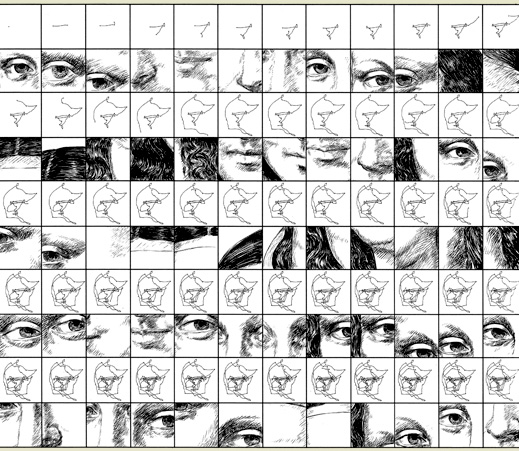
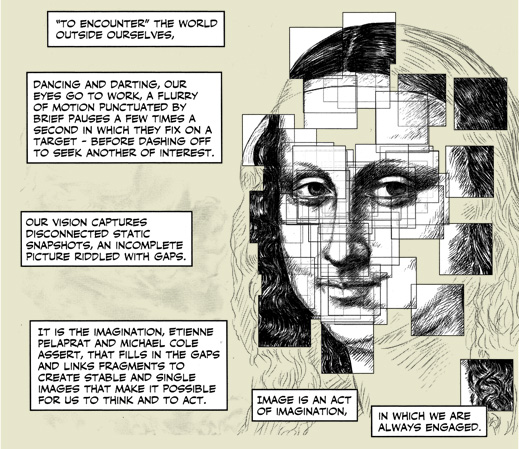
Unflattening, as a doctoral dissertation (with its continuous use of citation and its existence not as narrative but as extended argument) is a deeply ambitious project. And probably even an almost entirely successful project. It's worthy of your time and its greatest value may be in discussion of its ideas with others. I recommend it to you and recommend (as the best reward for the use of your time) that you engage in the critics's work yourself.77 Or even better, in the company of likeminded readers, perhaps in a classroom or bookclub.
Good Ok Bad features reviews of comics, graphic novels, manga, et cetera using a rare and auspicious three-star rating system. Point systems are notoriously fiddly, so here it's been pared down to three simple possibilities:
3 Stars = Good
2 Stars = Ok
1 Star = Bad
I am Seth T. Hahne and these are my reviews.
Browse Reviews By
Other Features
- Best Books of the Year:
- Top 50 of 2024
- Top 50 of 2023
- Top 100 of 2020-22
- Top 75 of 2019
- Top 50 of 2018
- Top 75 of 2017
- Top 75 of 2016
- Top 75 of 2015
- Top 75 of 2014
- Top 35 of 2013
- Top 25 of 2012
- Top 10 of 2011
- Popular Sections:
- All-Time Top 500
- All the Boardgames I've Played
- All the Anime Series I've Seen
- All the Animated Films I've Seen
- Top 75 by Female Creators
- Kids Recommendations
- What I Read: A Reading Log
- Other Features:
- Bookclub Study Guides










